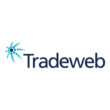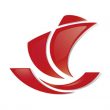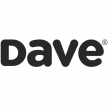Fragmentation drives OMS-EMS integration
Capital markets participants are increasingly turning to combined execution and order management systems that include tools for algorithmic and basket trading strategies in multiple asset classes, according to a new report by consultancy GreySpark Partners.
An order management system is the interface used by traders to enter orders and to connect to brokers and trading venues. An execution management system is a system that often encompasses market data, as well as more specific tools such as smart order routing, connectivity to multiple venues, transaction cost analysis, and help with deciding where a trade is cleared and settled.
Traditionally, these systems were separate, but recent years have seen increasing moves to combine the two as the services they provide become more commoditised. According to the GreySpark report, a single offering started to emerge in about 2008. Transaction cost analysis was the most popular addition to existing OMSs. Hybrid order and execution management systems attempt to cover the entire trading process from start to finish. In theory, automation and straight-through processing should enable significant cost savings for market participants.
However, some 40% of buy-side respondents to the GreySpark survey are concerned about the quality of data fed into the OMS systems. The need for consistent, high-quality data has often been cited by market participants as a key requisite for a successful business operation. The integration of OMS and EMS systems into a single platform heralds the prospect of consolidated market data and simpler workflow, as well as the obvious reduction in cost.
At the same time, the fragmentation of European liquidity sources since MiFID has combined with the rise of high-frequency trading and declining order sizes to increase the volume of data that needs to be handled by the EMS and OMS. A single integrated system helps streamline that flow of data, giving the buy-side and sell-side firms that use those systems a potential competitive advantage over slower, less-integrated systems. But there are still areas where the systems can be improved, according to Anna Pajor, consultant at GreySpark.
“Unexplored areas of differentiation are margin management, book delegation and transfer, netting and give-up management,” she said. “These can be managed by other buy-side systesm, for example portfolio management or treasury systems, therefore investment in developing these features should be considered in the context of the entire client offering, beyond order management.”
From a trading perspective, the OMS-EMS systems are also evolving as buy-side trading desks switch to a more multi-asset class style of trading. Returns from stock-picking have been relatively poor over the last five years, leading trading desks to diversify their coverage both geographically and in terms of asset classes. Baskets of securities, such as exchange-traded funds, have become increasingly popular.
Regulation has contributed to the process, as best execution reporting requirements have been built into most systems, with the result that those abilities have gradually become more commoditised. Broker-funded EMS platforms are becoming slightly less popular, with a 3% decrease since 2008; however, GreySpark estimates OMS and EMS technology spending to increase between 1% and 5% over the next two years.












































